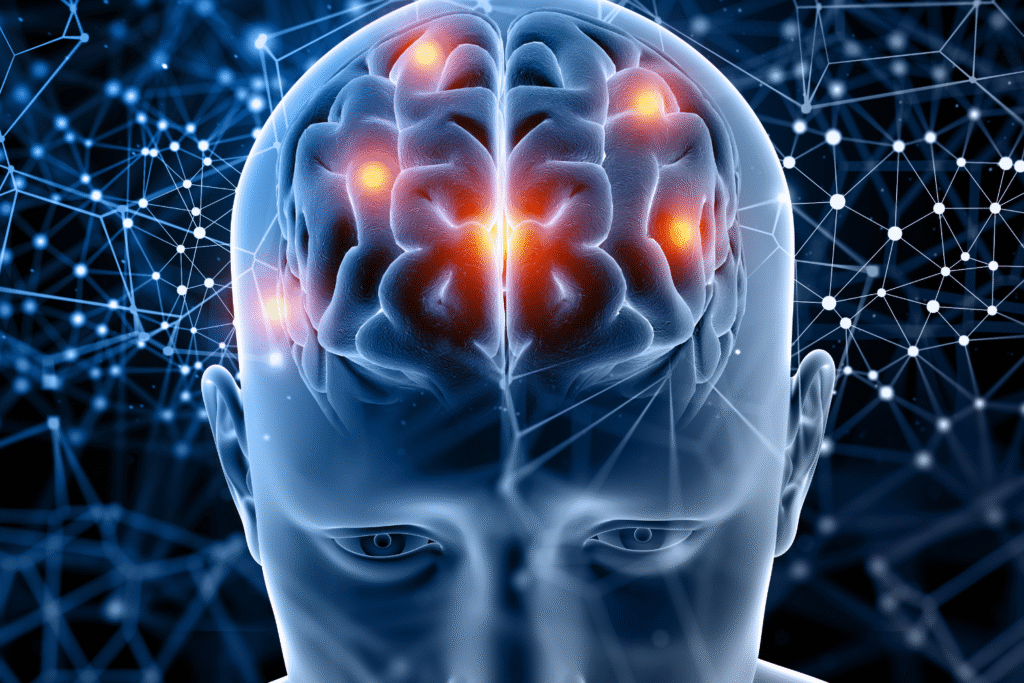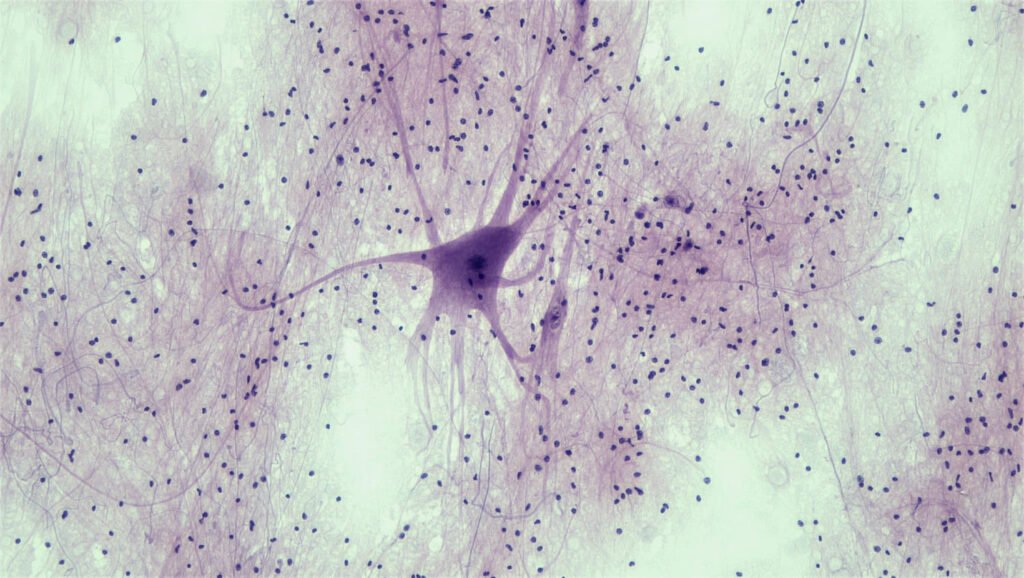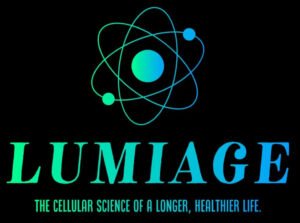
The Brain’s Regeneration Myth
For decades, science claimed the adult brain cannot regenerate. Nobel laureate Ramon y Cajal famously asserted we are born with a fixed number of neurons, slowly losing brain capacity over time. This long-held belief persisted despite mounting evidence to the contrary.
Evidence of Neurogenesis
Observations over the years have challenged this view. In the 1980s, studies on canaries revealed seasonal growth and loss of neurons in brain regions controlling singing, indicating that the adult brain can generate new neurons.
How Adult Cells Aid Brain Repair
Research later showed that adult stem cells, especially from bone marrow, can migrate to the brain and form functional neurons. In some bone marrow transplant patients, up to 1% of brain neurons originated from donor stem cells six years after transplantation. Over a lifetime, this could account for an estimated 13% of the brain’s neurons.
Stroke Recovery and Brain Health

A stroke damages brain tissue, often causing irreversible motor and cognitive deficits. Direct injection of stem cells into the brain improves recovery, but even simpler methods—like injecting stem cells into the bloodstream or stimulating the body’s own stem cell release—have shown significant improvements in motor and cognitive function.
Spinal Cord Injuries
Spinal cord injuries remain a major medical challenge. Research shows adult stem cells from sources such as bone marrow, dental pulp, and hair follicles can aid recovery. In animal models, stem cell injection promoted regrowth of neuronal tissue and improved mobility within weeks.
Simple Stem Cell Mobilization
Endogenous Stem Cell Mobilization (ESCM) is a non-invasive approach that encourages the release of one’s own stem cells. Studies report improvements in locomotion, muscle reflexes, and sensitivity in spinal cord injury models. Early human trials using plant-based ESCM supplements show promising results.
Conclusion
While there’s no universal cure for nervous system injuries, stem cell research offers real hope. ESCM provides a safe, accessible, and cost-effective method to naturally support brain and spinal cord repair, enhancing overall neurological health.
Sources:
- Cajal SR and May RT. (1959) Degeneration and regeneration of the nervous system. New York, NY: Hafner. p. 750.
- Considering the evolution of regeneration in the central nervous system.
Tanaka EM, Ferretti P.Nat Rev Neurosci. 2009 Oct;10(10):713-23. - Neurons generated in the adult brain are recruited into functional circuits.
Paton JA, Nottebohm FN. Science. 1984 Sep 7;225(4666):1046-8. - Transplanted bone marrow generates new neurons in human brains.
Mezey E, Key S, Vogelsang G, Szalayova I, Lange GD, Crain B.
Proc Natl Acad Sci U S A. 2003 Feb 4;100(3):1364-9. - Bone marrow transdifferentiation in brain after transplantation: a retrospective study.
Cogle CR, Yachnis AT, Laywell ED, Zander DS, Wingard JR, Steindler DA, Scott EW.
Lancet. 2004 May 1;363(9419):1432-7. - Bone marrow grafts restore cerebral blood flow and blood brain barrier in stroke rats.
Borlongan CV, Lind JG, Dillon-Carter O, Yu G, Hadman M, Cheng C, Carroll J, Hess DC.
Bain Res. 2004 Jun 4;1010(1-2):108-16. - Human marrow stromal cell therapy for stroke in rat: neurotrophins and functional recovery.
Li Y, Chen J, Chen XG, Wang L, Gautam SC, Xu YX, Katakowski M, Zhang LJ, Lu M, Janakiraman N, Chopp M.
Neurology. 2002 Aug 27;59(4):514-23. - New hope for stroke patients: mobilization of endogenous stem cells.
Borlongan CV, Hess DC.
CMAJ. 2006 Mar 28;174(7):954-5. - Functional recovery of stroke rats induced by granulocyte colony-stimulating factor-stimulated stem cells.
Shyu WC, Lin SZ, Yang HI, Tzeng YS, Pang CY, Yen PS, Li H.
Circulation. 2004 Sep 28;110(13):1847-54. - Beneficial effect of pharmacological mobilization of bone marrow in experimental cerebral ischemia.
Six I, Gasan G, Mura E, Bordet R.
Eur J Pharmacol. 2003 Jan 5;458(3):327-8. - The Therapeutic Potential of Stimulating Endogenous Stem Cell Mobilization. In: Tissue Regeneration – From Basic Biology to Clinical Application. Drapeau C, Eufemio G, Mazzoni P, Roth GD and Strandberg, S. InTech Open, 2012.
- Mesenchymal stem cells therapy exerts neuroprotection in a progressive animal model of Parkinson’s disease.
Park HJ, Lee PH, Bang OY, Lee G, Ahn YH.
J Neurochem. 2008 Oct;107(1):141-51. - Pegylated granulocyte colony-stimulating factor conveys long-term neuroprotection and improves functional outcome in a model of Parkinson’s disease.
Frank T, Klinker F, Falkenburger BH, Laage R, Lühder F, Göricke B, Schneider A, Neurath H, Desel H, Liebetanz D, Bähr M, Weishaupt JH.
Brain. 2012 Jun;135(Pt 6):1914-25. - Stem cell factor and granulocyte colony-stimulating factor reduce β-amyloid deposits in the brains of APP/PS1 transgenic mice.
Li B, Gonzalez-Toledo ME, Piao CS, Gu A, Kelley RE, Zhao LR.
Alzheimers Res Ther. 2011 Mar 15;3(2):8. - G-CSF rescues the memory impairment of animal models of Alzheimer’s disease.
Tsai KJ, Tsai YC, Shen CK.
J Exp Med. 2007 Jun 11;204(6):1273-80. - Human dental pulp-derived stem cells promote locomotor recovery after complete transection of the rat spinal cord by multiple neuro-regenerative mechanisms.
Sakai K, Yamamoto A, Matsubara K, Nakamura S, Naruse M, Yamagata M, Sakamoto K, Tauchi R, Wakao N, Imagama S, Hibi H, Kadomatsu K, Ishiguro N, Ueda M.
J Clin Invest. 2012 Jan;122(1):80-90. - Potential Roles of Dental Pulp Stem Cells in Neural Regeneration and Repair.
Luo L, He Y, Wang X, Key B, Lee BH, Li H, Ye Q.
Stem Cells Int. 2018 May 7;2018:1731289. - Rat hair follicle stem cells differentiate and promote recovery following spinal cord injury.
Najafzadeh N, Nobakht M, Pourheydar B, Golmohammadi MG.
Neural Regen Res. 2013 Dec 25;8(36):3365-72. - Marrow stromal cells form guiding strands in the injured spinal cord and promote recovery.
Hofstetter CP, Schwarz EJ, Hess D, Widenfalk J, El Manira A, Prockop DJ, Olson L.
Proc Natl Acad Sci U S A. 2002 Feb 19;99(4):2199-204. - Transplantation of bone marrow stem cells as well as mobilization by granulocyte-colony stimulating factor promotes recovery after spinal cord injury in rats.
- Urdzíková L, Jendelová P, Glogarová K, Burian M, Hájek M, Syková E.
J Neurotrauma. 2006 Sep;23(9):1379-91. - The Therapeutic Potential of Stimulating Endogenous Stem Cell Mobilization. In: Tissue Regeneration – From Basic Biology to Clinical Application. Drapeau C, Eufemio G, Mazzoni P, Roth GD and Strandberg, S. InTech Open, 2012.


